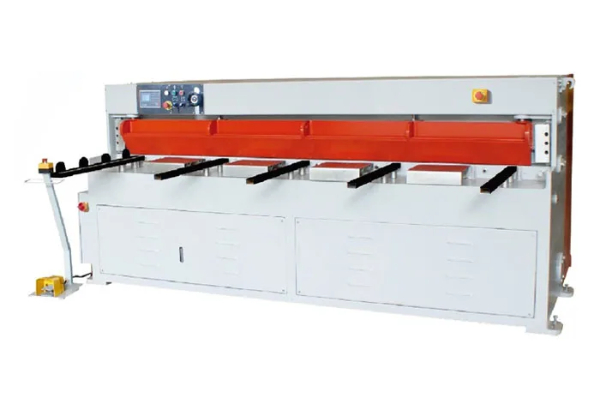
Best Practices for Blade Selection and Maintenance in Steel Strip Slitting Machines
- By:Metmac
- 2024-05-10
- 185
In the steel industry, slitting machines are crucial for cutting steel strips into narrower widths. Blades play a critical role in this process, and optimizing blade selection and maintenance can significantly enhance productivity, reduce downtime, and ensure precise cuts.
Blade Selection: The Foundation of Efficiency
Selecting the right blades for your steel strip slitting machine is paramount. Consider the following factors:
Material: Select blades made of high-quality tool steel alloys with excellent wear resistance and edge retention, such as D2, M2, or T4.
Thickness: Thicker blades are more durable but may require more power to cut, while thinner blades are more flexible but less wear-resistant.
Tooth Profile: Choose tooth profiles that match the material being cut. For example, serrated blades are suitable for aluminum, while wavy blades perform well on soft steel.
Coating: Coatings like titanium nitride can extend blade life and improve cutting efficiency by reducing friction and corrosion.
Blade Maintenance: Ensuring Optimal Performance
Regular blade maintenance is essential to sustain peak performance. Implement these practices:
Cleaning: Keep blades clean using appropriate solvents or ultrasonic baths to remove debris and prevent premature wear.
Sharpening: Blades gradually dull with use. Sharpen them regularly using a precision blade grinder to restore their cutting edge.
Inspection: Inspect blades regularly for signs of damage, wear, or deflection. Replace or repair damaged blades promptly.
Alignment: Ensure blades are properly aligned with the material to prevent uneven cutting and premature wear.
Tension: Adjust blade tension to ensure optimal cutting performance and extend blade life.
Monitoring and Control: The Key to Productivity
Monitoring and controlling blade parameters is crucial for efficient operation:
Temperature: Excessive temperature can reduce blade lifespan. Use temperature sensors or infrared thermometers to monitor blade temperature and adjust cooling systems accordingly.
Vibration: Excessive vibration can indicate blade imbalance or improper tension. Monitor vibration levels and make adjustments to minimize it.
Cutting Force: Measure cutting force to assess blade sharpness and monitor blade wear. Adjust machine settings or replace blades as needed.
Conclusion
By adhering to best practices for blade selection and maintenance, steel strip slitting machines can operate at peak performance. Proper blade selection ensures efficient cutting, while regular maintenance prolongs blade life and minimizes downtime. Monitoring and controlling blade parameters further optimize performance, resulting in increased productivity, reduced costs, and high-quality cuts.
-
Advanced Sheet Metal Rolling, Cutting, and Folding Machines for Efficient Fabrication
2025/10/22 -
High-Precision Sheet Metal Bending and Cutting Solutions for Modern Manufacturing
2025/10/22 -
High-Precision Solutions from Leading Sheet Metal Cutting Machine Manufacturers
2025/09/11 -
Reliable Sheet Metal Equipment for Sale to Support Precision Fabrication
2025/07/17
-
Advanced Sheet Metal Rolling, Laser Cutting, and Folding Machines for Precision Fabrication
2025/10/31 -
High-Performance Sheet Metal Bending and Cutting Machines for Modern Fabrication
2025/10/31 -
High-Quality Sheet Metal Equipment for Sale: Efficient Solutions for Modern Manufacturing
2025/10/31 -
High-Performance Sheet Metal Equipment for Sale: Forming and Shearing Solutions for Modern Fabrication
2025/10/22
-
A Guide to the Latest Innovations in Sheet Metal Folding Machines
2024/11/29 -
Key Features to Consider When Investing in a Sheet Metal Folding Machine
2024/11/28 -
Enhancing Precision with Advanced Sheet Metal Folding Machines
2024/11/27 -
How to Choose the Right Sheet Metal Folding Machine for Your Workshop
2024/11/26






